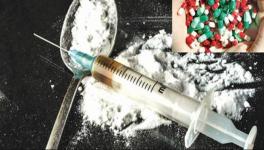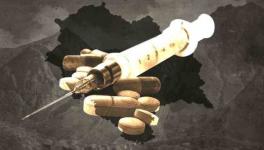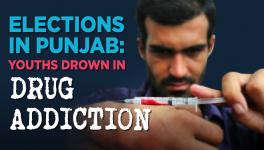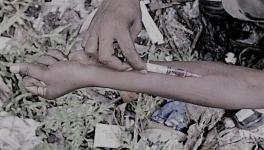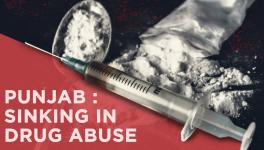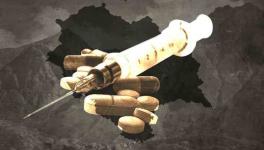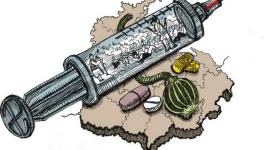Kashmir Drug Users Overwhelmingly Male, Women Bear Brunt of Addiction Crisis
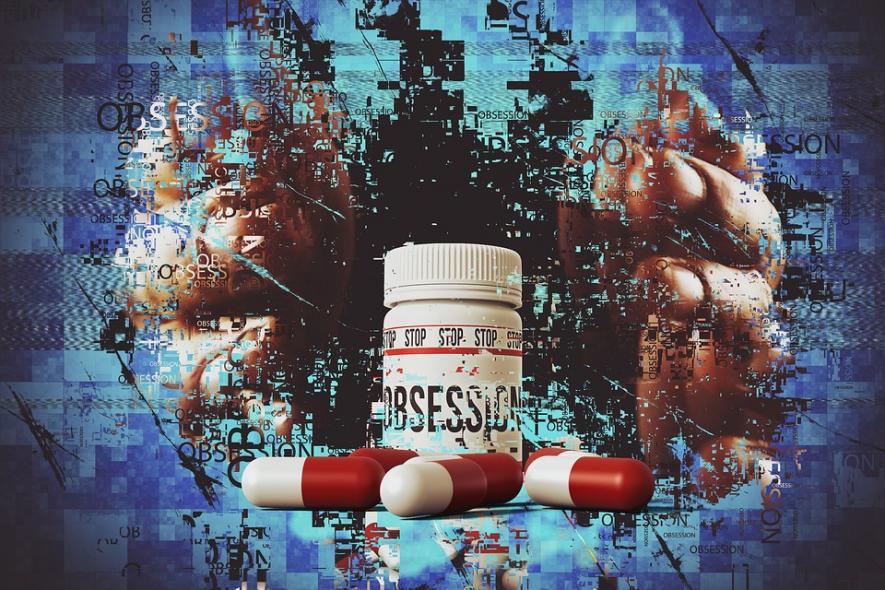
Image Courtesy: MaxPixel
Adnan, 23, was a promising sportsman known for his cricketing acumen in his Srinagar neighbourhood. That was until the arrival of the COVID-19 pandemic. During the lockdown, his mother noticed a change in her son’s behaviour. Instead of his usual interest in sports, he would sleep most of the day at home.
Safina, another young man Ayaan’s mother, thought her son might be fed up and frustrated by the restrictions on going out during the pandemic. But even when the restrictions were lifted, Ayaan never regained his earlier passion for sports. Instead, he would roam around with boys who had earned an ill reputation in the neighbourhood. Feeling her son may fall into bad habits, Safina tried to control his activities.
“When I put severe restrictions on him, including that he could not leave home unnecessarily, he broke down like a child, kissed my feet and hugged me tight while high on drugs. That is when I realised that my worst fear had come true and my son had become a victim of drug abuse,” Safina says.
Kashmir, which was always in the news for incidents of violence, is now making the headlines for battling an alarming number of drug cases. According to a report published in a local daily newspaper, almost three per cent of the adult population in the valley consumes contraband substances.
The authorities are trying to curb the nuisance and have booked several drug peddlers under the Narcotic Drugs and Psychotropic Substances or NDPS Act. Some peddlers have been booked under the Public Safety Act, too, but the data shows no reduction in the spread of the drug menace.
As The Indian Express has reported, the Srinagar-based Shri Maharaja Hari Singh (SHMS) hospital, the valley’s largest district de-addiction centre, receives one drug patient every twelve minutes.
According to data from the Ministry of Social Justice and Empowerment, 1.08 lakh men and 36,000 women were found using cannabis in Jammu and Kashmir in 2022. The data also shows that 5.34 lakh men and 8,000 women consumed opioids, 1.6 lakh men and 8,000 women abused sedatives and 1.27 lakh men and 7,000 women were hooked to inhalants.
The erstwhile state of Jammu and Kashmir is adjacent to the so-called Golden Crescent, where 80% of the world’s opium is known to be cultivated. Some reports are even more worrying. They say that the Kashmir valley has roughly 67,000 drug users, of whom 85% or more than 56,000 inject the deadly drug, heroin, daily.
A report published by BBC shows that a survey conducted by the Jammu and Kashmir administration in 2022 revealed that more than 52,000 people in Kashmir admitted to using heroin. It also reported that, on average, users spent around Rs 88,000 per month on drugs. The study also showed that most drug addicts are unemployed and aged between 17 and 33 years.
Take Adnan, caught in the vicious cycle of drug abuse. When Adnan’s father beats him, his mother comes to his rescue, which leads to confrontations and escalates into more violence within the family. His mother tries hard to find the courage to bring her son to a de-addiction clinic but fears the inevitable taunts of people in the neighbourhood. She believes that in conservative Kashmir, one must battle on numerous fronts for a single problem—she is trapped in a cycle of violence at home and taunts from society and sees no way out.
A recent report based on findings of the National Drug Dependence Treatment Centre at AIIMS, Delhi, shows Kashmir has the highest percentage of drug addiction cases in India. The report shows that around 10 lakh persons in the Union Territory are afflicted by drug usage. The majority of drug users in Kashmir are unemployed and young.
Twelve-year-old Nadeem, from a wealthy family, grew up watching his older brother Junaid struggle with drug addiction. Although Junaid would steal to find the money for drugs, Nadeem could not escape getting sucked into the vortex of the same menace—he, too, has a heroin addiction.
Drugs have affected Nadeem so severely that he indulges in violence, of which his mother bears the brunt. She has fallen into a state of depression. Junaid spent some time in a rehab centre, but this year, an Eid picnic with friends had him backslide.
“We sent Nadeem to a rehab facility, but he refuses to see through the therapy. His condition deteriorates daily, and he cannot survive even for a few minutes without heroin. He has refused to continue his studies, and we fear the worst for him,” says his mother.
Drug addiction has not only taken a financial toll on the family but has them suffering through severe financial problems. Moreover, their reputation in society has also taken a hit—the neighbourhood has boycotted the family.
Uncontrollable Trend?
A survey by the Government Medical College (GMC) Srinagar’s Department of Psychiatry showed that heroin has overtaken other drugs as the most widely used narcotic among those with substance abuse problems. Young males between 28 to 15 years are more likely to take drugs than older males.
And the situation is getting worse day by day in Kashmir. “On average, we routinely see 100-250 drug addiction patients in our outpatient department at the drug de-addiction centre at SMHS,” says Dr Yasir Rather, a professor in the Department of Psychiatry, IMHANS GMC Srinagar.
He says peer pressure, easy access to drugs, teenage enthusiasm for thrill-seeking, the need for mobility, and family conflicts, among other things, are the significant causes of drug addiction in Kashmir.
Regarding patients, around 15 to 20 daily walk-in cases are new, while the rest are follow-up cases. He says, “Some 99% of our drug addiction patients are male, and we hardly ever see female patients.”
But life has disproportionately worsened for female family members due to the drug menace. For instance, Nadeem’s mother suffers from a heart condition, depression and anxiety due to her sons’ struggles with drug use. Watching her children slowly fade away due to addiction has left her troubled and dependent on medication to survive.
Drug-Linked Violence Against Women
Dr Suhail Rasool Mir, senior researcher in sociology at the University of Kashmir, says, “I have been working on violence against women and drug nuisance in the valley. In my study, I have found a direct link between the prevalence of domestic violence in females due to drug abuse.” He says that a family member who is a drug addict is a significant contributing factor to domestic violence. “In my study, I found that drug addicts beat the female members of their families,” he says. In a shocking incident in March, 32-year-old Showkat Ahmed Ganie, a drug addict, strangled his elderly mother in Sopore district Baramulla in North Kashmir.
According to Dr Rather, there was a surge in drug addiction cases in Kashmir, but the government took strong actions, which stopped the supply of drugs to an extent. He says the non-availability of drugs forces the user to seek proper medical treatment. “Most of the time, our treatment is an evidence-based [scientific] treatment that retains patients, but we face issues as patients lapse in the middle of treatment,” he says.
Take Javaid, who had a respectable job and was doing well but started taking drugs, which ruined his business. As a result, his father severed ties with him—and forced his mother to stop communicating with him, too.
“Due to the aggressive behaviour of his father, Javaid stopped using drugs for some time, but lately, he resumed. He sought treatment, and we are currently caring for him,” says a member of the rehabilitation centre wishing to remain anonymous.
In Kashmir, several public-sector facilities in district hospitals provide free medication to patients, including in-patient facilities. In the Tral, Shopian, and Bandipora districts, the social welfare department has begun opening drug de-addiction clinics where patients can be admitted. “In Srinagar, we have in-patient treatment facilities at SMHS, while the JVC hospital is currently constructing an in-patient department,” says Dr Rather.
While Adnan’s mother struggles to take her sons to a drug addiction centre, many young boys and men—and some women—still follow in Adnan’s footsteps. Although the administration is trying hard to curb this nuisance and has nabbed several drug peddlers, people believe that without tracking down kingpins and smugglers, it is difficult for the administration to control this disease.
(The names of patients, family members and drug users have been changed on request.)
Mubashir Naik and Insha Shirazi are freelance journalists. The views are personal.
Get the latest reports & analysis with people's perspective on Protests, movements & deep analytical videos, discussions of the current affairs in your Telegram app. Subscribe to NewsClick's Telegram channel & get Real-Time updates on stories, as they get published on our website.










